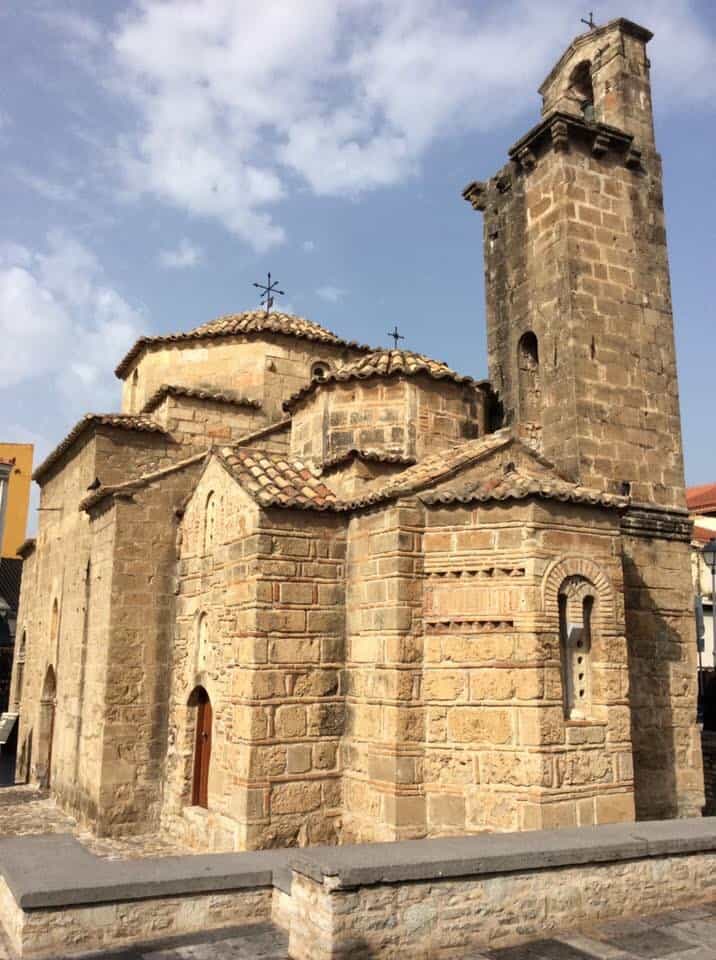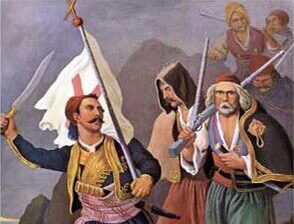The Battle of Kalamata took place on 23 March 1821 between the Greek irregular revolutionary forces and the Ottoman forces of the city. It was one of the first events of the Greek War of Independence. The result was the capture of the city by the Greeks. Kalamata became the first city to be liberated.
Greek independence heroes Kolokotronis, Nikitaras “the Turkeater,” Petros Mavromichalis, the warrior priest Papaflesas and 2,500 Greek rebels liberated Kalamata in the first major battle in the Hellenic War of Independence.
In the Church of the Holy Apostles liturgy in Kalamata on this day on March 23, 1821, the Hellenic forces celebrated the victory and it was where the Hellenic Revolution was declared.
Church of the Holy Apostles in Kalamata.

Prior to the battle on March 17, 1821, the Maniates in Tsimova (now Areopoli) had declared war on the Ottomans and with a force of about 2000 under Petros Mavromichalis advanced against Kalamata.
They united with Kolokotronis, Nikitaras and Papaflessas among others to march from Mani.
The Katsos (then Katzos) Clan members then klepfts were among the combatants in the battle and descended from Nihori/Neohori with then Kapetan (later General) Panayiotis Kefalas of Dyrahhi from the Northern Taygetos Mountains with other “Sampasiotes” as they were known then (now Falaisia in Arcadia).
They had assembled and mustered in the hill of Ayia Anna before the assault on Kalamata and its Kastro/Castle.
This included Katzos/Katsos brothers Yiannakis (who later died of wounds sustained in the modern “Battle of the 300” at Maniaki in 1825 and where Papaflessas and General Kefalas died), Athanasios (“Katsothanasis”) and Hlias (later in life “Kalogeros Ionas”) Katzos.
Kalamata was captured two days before the Hellenic Revolution theoretically “started”.
What had taken place in Kalamata was a result of Papaflessas’ angry words and prophecy after the Hellenic civil leaders and members of the senior clergy assembled on January 26, 1821, at the critical meeting in Vostitsa (now Aigion) to discuss the revolution started which had been discussed to be March 25 to coincide with the Orthodox commemoration day of the Annunciation of the Theotokos.
At that meeting (and before) the statement was made by Papaflessas and other Filiki Etairia members that the Russians were going to support the revolution and send forces to which the Hellenic leaders and senior clergy feeling nervous about starting the revolution voted to send emissaries to Russia to verify the Russians “were” coming before the revolution was declared.
Angered (and almost arrested) Papaflessas shouted at the meeting “Give me the Sampasiotes (current Falasia in Arcadia), the Pisohorites (the Laconian highlanders of the Epanou Riza/now Pellana) and a thousand Maniates and I will start the revolution myself.”
Basically, that’s what happened with the revolution starting as a people’s uprising with early outbreaks in Ilia and the Kalavrita prior to the Battle of Kalamata.
In terms of raising the banner on March 25th by Metropolitan Germanos at the Monastery of Ayia Lavra to start the revolution that never actually happened.

